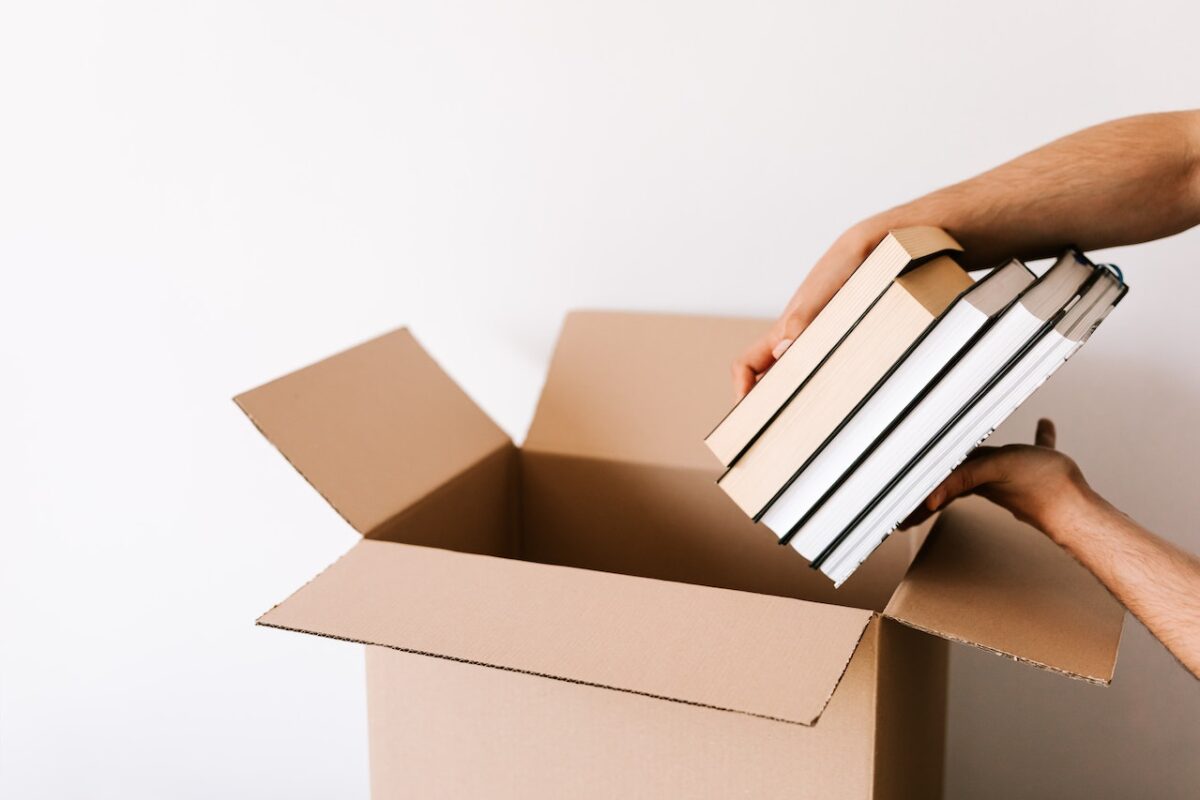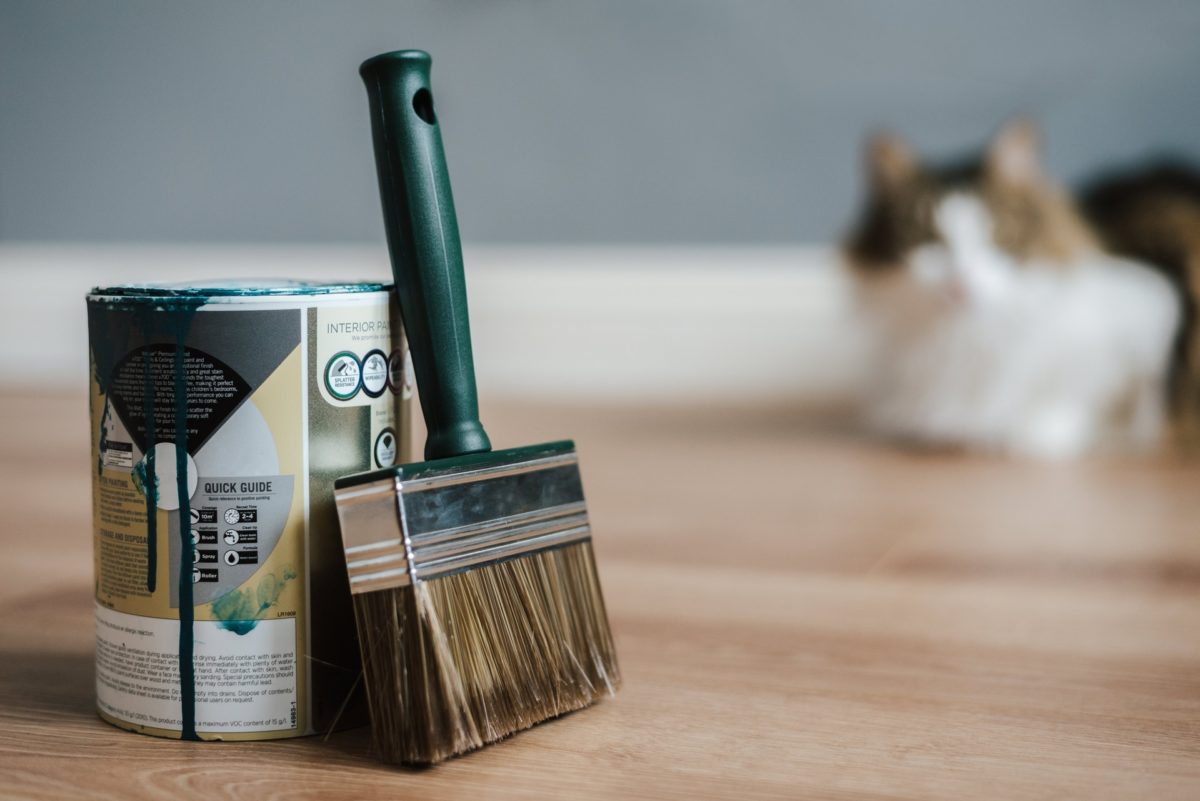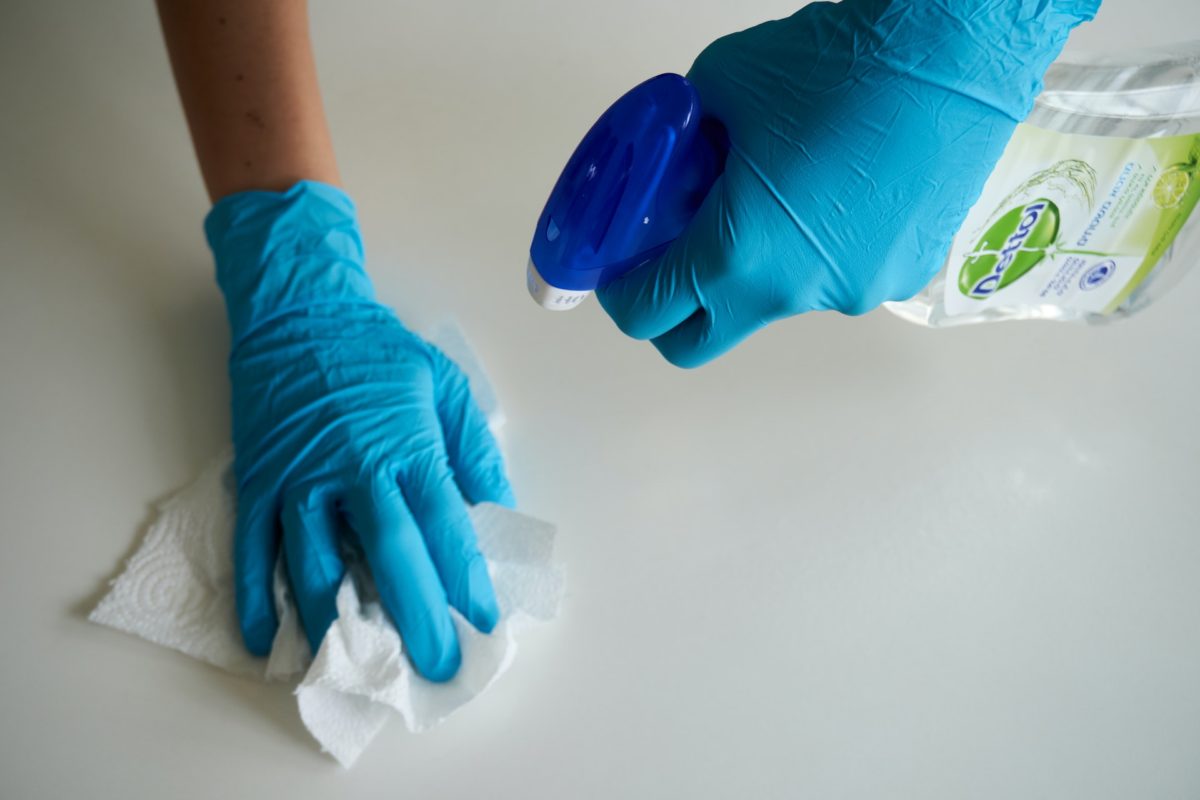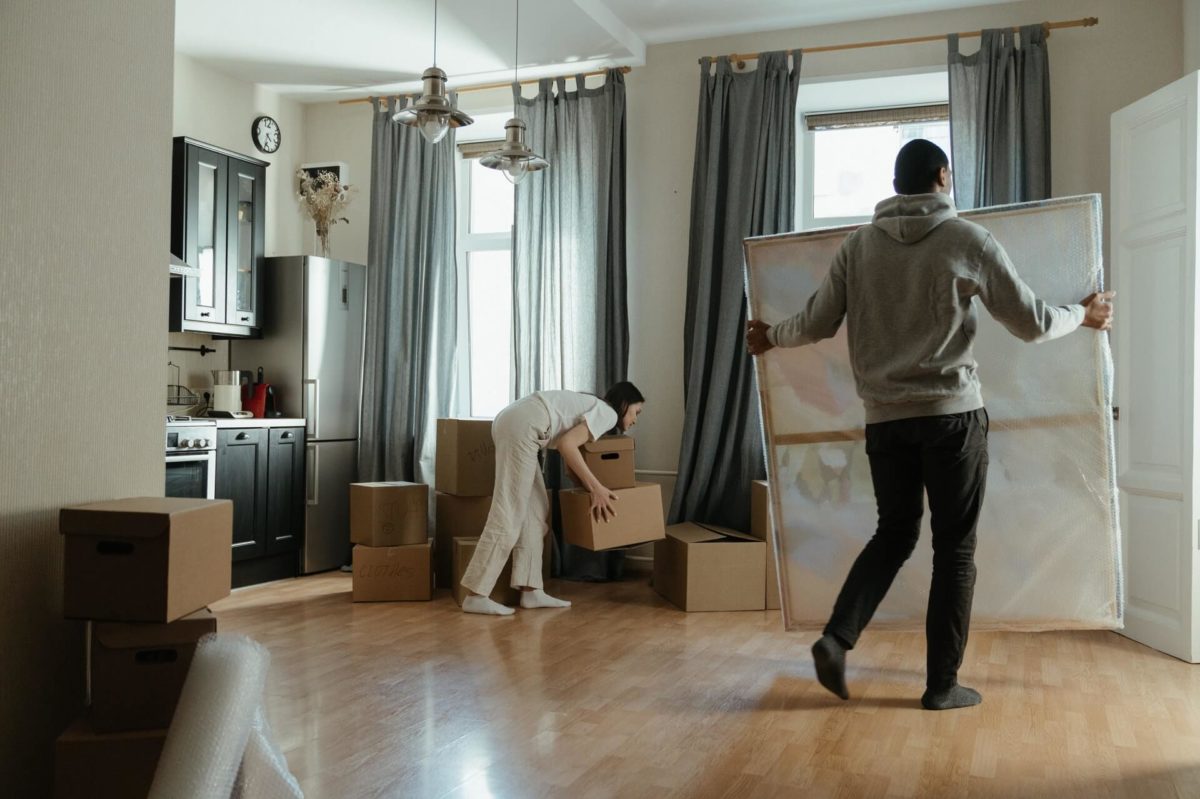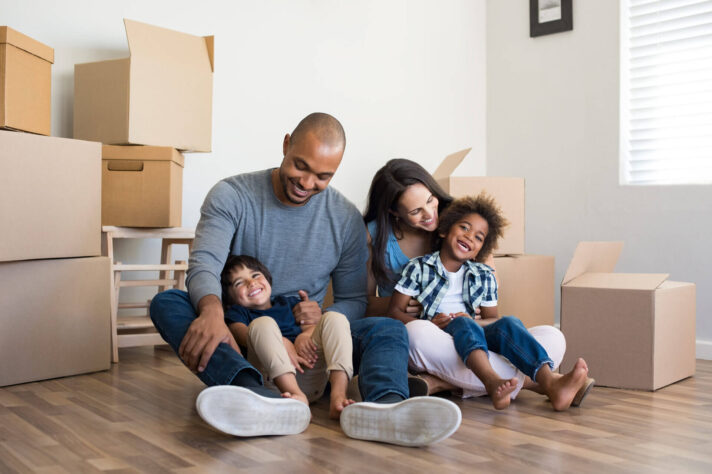When we relocate, we think about and focus on many things, but we usually don’t consider how to unpack after moving and whether it can be done systematically. However hard it was to pack, unpacking can be more than overwhelming. That’s why you need to beat procrastination.
If you start unpacking with a system, you can even have some fun doing it
It’s a fact of life that Americans tend to move a lot, and another point is that it’s a stressful event. Relocations are complex, even when we hire helping hands in the form of reliable long-distance movers.
And after we’ve gone through the whole ordeal of organizing and relocating, we finally cross the doorstep of our new house with a full heart. There are many things to do after relocating that awaits us, and it’s more than easy to postpone unpacking after a move.
But no one likes to live their life out of cardboard boxes and suitcases, and that’s why we offer you some tips on how to begin settling in.
Decluttering Your Home is A Good Philosophy to Embrace and Have Less to Deal With Later
Preparations that will help you unbox with ease start early on, even before you begin packing. Purging your house and getting rid of anything unusable and unnecessary can be beneficial in many ways and will help you move efficiently. Scour your residence, look in every room and corner, sniff around every closet, and start making piles of stuff you won’t take with you.
Off to the Garbage Bin With Broken and Unusable Stuff
Our garages, tool sheds, and attics are usually the places where we put away the “might need this later” objects. That’s why these are the best places to start with the purge. Be honest with yourself and admit you’ll never get around to fixing these things and that they are bound to be thrown away. Once you declutter here, it will be easier to pack tools and everything else you store in these rooms.
Contact the Cross-Country Moving Company and Ask for a List of Banned Items
When you invest in cross-country moving services, you can choose from a variety of different solutions for your move. You can transport your car using an auto shipping service or let the professionals pack everything up. Cross Country Moving Company offers all these options and more.
Perhaps a DIY process may seem like the cheapest way to move out of state, but in the end, it will probably cost you more than hiring movers. So, a relocating company will do everything and more to make your transition swift and effortless, but there are some items they won’t transport:
- Hazardous, toxic, and flammable materials and objects range from paints and paint thinners to household items such as deodorants and nail polish. These things pose a threat, especially when they are shipped in the back of the truck, where the temperatures may get extremely high. But you shouldn’t transport them by yourself either.
- Perishable foods are not dangerous but could spill or mold and damage your other belongings. That’s why they are not among the kitchen items that you should pack.
- Pets and plants can’t go on the relocation company’s truck either. While plants will probably perish along the way, the back of a vehicle isn’t a good place for your furry companion either. Make arrangements to take them with you, or hire a specialized company specialized for pet relocation.
For a more precise description of what we can’t or won’t move, contact Cross Country Moving Company directly for a list of banned transport items. That will help your decluttering quest even more because you’ll know what to dispose of.
Paint and paint thinners are considered flammable, so it’s essential to dispose of them
Donate Some of Your Things and Make Someone Else Happy
After you’ve gotten rid of useless stuff, the next step is to set aside your belongings that are still in good condition, but you don’t want to keep. These things can be donated to charities like The Salvation Army.
Some accept different types of items, from furniture to well-preserved and neatly packed clothes, but most will accept packed shoes, medications, canned and dried food, but also toys, and bathroom items such as towels and bedding. Contact a charity and agree on the pickup day.
You Can Sell the Stuff That’s in the Best Condition
There’s no need to pack dishes for relocation if they are mismatched, and the same goes for packing glassware. This is a perfect opportunity to get rid of it while also earning some money to contribute to your budget.
If you’ve never thrown a garage sale before, keep in mind that you should designate one day for it (Saturday mornings are the best time for this) and that you should advertise it well, both in the neighborhood and on social media.
You can find some tips on how to organize your garage sale in the following video.
Pack With Unpacking in Mind Before the Long-Distance Moving Company Arrives
One of the best packing tips and tricks that will help you answer “How do I unpack fast after moving?” is to label each box properly as you pack it. Knowing where each package goes will ease up the settling process in your new home in a big way. If you have enough time, number the boxes, make a photo inventory of the contents or write it down in a notebook or phone.
Tips for Unpacking After a Move – Color Coding the Boxes Will Help Greatly
If you are last-minute relocating and don’t have enough time to write down what you place in boxes or take photos, you can use the color-coding system. Designate a color for each room, and label the boxes accordingly. You’ll later do the same with the doors in your new place, and that way, the cross-country movers will know where each box goes.
The Cross-Country Movers Will Disassemble Your Furniture for Moving Cross Country
You’re probably wondering how to pack furniture to ease up the process of settling in later, and it’s best to let the long-distance movers relocate furniture. They will disassemble all the bulkier pieces and wrap them up to secure them. You may want to place all the hardware, such as screws and hooks, into ziplock bags and tape them to the furniture for easier reassembling later.
Don’t lose the screws and other hardware, so you can easily reassemble the furniture
It’s Cleaning Time, as Soon as You Walk Into Your New House
Yes, you’ve already done your move-out cleaning before you left the previous abode, and the last thing you believe you should do is some more cleaning before you settle in. Although the earlier residents have probably left the house neat and tidy, you should do a once-over before you start placing the rest of your stuff around. Grab some cleaning supplies and begin to spruce up your residence, but pay special attention to the bathroom and the kitchen.
It’s better to clean up a bit before you begin unpacking
You’ve Moved in, Now How to Unpack After Moving?
As it is vital to write a general timeline for all tasks related to your relocation ahead of time, it’s a good idea to give yourself a deadline. While we may procrastinate settling in and make one of the common mistakes and justify it by believing that no one can see all the unpacked stuff around the house, it may give you the needed boost if you invite some guests over. Throw a BBQ and invite your neighbors – it may be the perfect opportunity to make friends in a new state.
Where Do I Start Unpacking After Moving? Best Begin With the Essentials
One of the crucial things we should do is bring our relocating essentials with us, and it will naturally be one of the first things we get into the house. This is one of the best unpacking tips since the essentials bag is filled with stuff you’ll need right away and which will enable you to pull through the next few days without running to the store. This bag should contain basic toiletries, some kitchen utensils, chargers, a change of clothes, and some entertainment both for the kids and you.
Unpacking Tips for After a Move Include Letting Long-Distance Movers Reassemble Furniture
Your cross-country movers are probably very well-versed and trained in handling all kinds of items, and they will set your furniture in an instant. This will make the whole process quicker, as you will have empty shelves and closets to put away most of your possessions. If you’ve packed books and brought them with you, it will be easy peasy just to take them out of each box and place them on their shelves.
Movers will take care of the furniture
How to Unpack After a Move – Decide Which Room Goes First
Long-distance movers have probably helped you a lot, especially with their packing service. Now the stuff you’ve kept in storage units has arrived, and determination is required to carry on with work. If you’re wondering how to unpack after a move with a system, it may be wise to go room by room. Our priority rooms may vary. For some, it’s the bathroom, and some need the kitchen available as soon as possible.
How to Wrestle With the Kitchen
Simply thinking about all that goes into the kitchen, such as packed plates, pans, small appliances, and all the kitchen utensils no meal can go without, can be overwhelming. But, as with everything else, a system can ease this task.
Our suggestion is to begin by filling up the drawers and then move on to the cabinets. If it gets too tiring for you, you can change the scenery by connecting your packed computer, as well as other packed electronics.
The Bathroom Should Be Next
The next step is to move on to the bathroom. You’ve already placed some basics from the essentials bag, and now it’s time to unbox the rest. Put away the towels and beauty products, and fill out the medicine cabinet. You can later go out and buy some decorations, as well as a shower curtain for an utterly stylish feel.
The Day Has Come to Continue With the Rest
The two most frequently used rooms are done with, and now it’s time to move on to the rest of the house. You can now work by category, and for example, you can unbox all the clothes first, and then the shoes. The decorations and artwork should come last once you’ve had everything else set up.
Go through the rooms or by category
How Long Should It Take to Unpack After a Move?
If you’re determined, systematic, and well-organized, you should unbox everything in a jiffy. And if you include all the members of your family to take care of some part of the process, it will all be over sooner than you thought.
The kids could take care of their toys and books, and the final stages of setting everything up should be done along the way. In the end, all the packing materials could be placed into the garage or given away through Craigslist for someone else to use.
Your home will be neat and comfy, and you can start enjoying your fresh beginning to the fullest. So call Cross Country Moving Company to help you pack and prepare everything, and get ready to have the easiest unpacking session of your life.
Frequently Asked Questions About How to Unpack After Moving
Where Do I Start With Unpacking After Moving to a New Home?
After moving cross-country, start by unpacking essential items first, such as toiletries, bedding, and kitchenware. Begin with one room at a time, from the most important rooms like the bedroom, bathroom, and kitchen.
As you unpack, create a system for sorting items into keep, donate, or discard piles. Be sure to label boxes while packing to help you stay organized and avoid confusion while unpacking.
Consider setting up furniture and larger items early on to make sure they fit in your new space. Finally, take breaks when needed, and remember that unpacking is a process that can take time.
How Do I Prioritize Which Boxes to Unpack First After Moving?
Prioritize which boxes to unpack by starting with essential items such as toiletries, bedding, and kitchenware. Unpack one room at a time, starting with the most important rooms like the bedroom, bathroom, and kitchen.
Additionally, prioritize boxes labeled “Open First” or “Priority” to unpack items that you will need immediately. Consider unpacking items that are sentimental or provide comfort, such as family photos or a favorite blanket, to help you feel more at home in your new space.
What Are Some Tips for Staying Organized During the Unpacking Process?
Some tips for staying organized while unpacking include labeling boxes clearly, creating a system for sorting items into keep, donate, or discard piles, and unpacking one room at a time. As you unpack, try to put items away in their proper places instead of leaving them out. Finally, take breaks when needed, and don’t rush the unpacking process.
How Long Should It Take To Unpack After Moving?
The amount of time it takes to unpack after long-distance moving can vary depending on the size of your home, the number of items you have, and how organized you are. It can take anywhere from a few days to several weeks to fully unpack after moving.
Should I Unpack Room by Room or by Priority?
It’s generally recommended to unpack room by room to stay organized and avoid feeling overwhelmed. Start with the most important rooms and work your way through the rest. However, it’s also helpful to prioritize boxes labeled “Open First” or “Priority” to unpack items that you will need immediately.
How Do I Dispose of Packing Materials After Unpacking?
To dispose of packing materials after unpacking, recycle or reuse them whenever possible. Flatten cardboard boxes and recycle them along with packing paper, bubble wrap, and packing peanuts.
If you have large items such as furniture or appliances, consider donating them instead of throwing them away. Check with your local waste management facility to see if they offer curbside pickup or drop-off locations for bulky items such as packing materials.
Remember to properly dispose of any hazardous materials, such as batteries or electronics, in accordance with local regulations.
What Should I Do With Items That Don’t Have a Place in My New Home?
For items that don’t have a place in your new home, consider donating or selling them. Sorting items into keep, donate, or discard piles as you unpack can make that easier. If you have items in good condition you no longer need, consider donating them to a local charity or selling them online or at a garage sale. You can also give items to friends or family who may have a use for them.
How Do I Make Sure Fragile Items Are Safely Unpacked?
Make sure fragile items are properly packed with materials like bubble wrap and packing paper. When unpacking, handle them with care by unwrapping them slowly and gently. Use scissors or a box cutter to avoid accidental damage. Additionally, unpack fragile items on a soft surface such as a bed or a rug. Consider unpacking one at a time.
What Tools Should I Have On Hand When Unpacking?
When unpacking, some useful tools to have on hand include a box cutter or scissors, a tape measure, a hammer, screwdrivers in various sizes, pliers, and a utility knife. You may also need a level, a power drill, and some Allen wrenches to assemble furniture.
How Do I Handle Items That Require Assembly After Unpacking?
For items that require assembly, carefully read the instructions and gather all necessary tools and hardware. Lay out all parts and hardware in a clear space to avoid losing anything.
Assemble the item step-by-step, following the instructions closely and double-checking your work as you go. If the item requires more than one person to assemble, ask for help.
Avoid forcing pieces together, as this can cause damage to the item. Finally, test the item to make sure it’s stable and secure before use.
How Do I Manage the Stress of Unpacking After Moving?
To manage the stress of unpacking after moving cross country, break the process down into smaller, manageable tasks and take breaks when needed. Prioritize essential items and unpack one room at a time to avoid feeling overwhelmed.
Consider enlisting the help of friends or family members to make the process more enjoyable and efficient. Additionally, take care of yourself by staying hydrated, eating healthy meals, and getting enough rest.
Make time for relaxation and self-care activities such as exercise or reading to help reduce stress. Finally, try to stay positive and focus on the excitement of starting a new chapter in your life.
How Can I Involve My Family in the Unpacking Process?
To unpack with family after arriving with a cross-country moving service, assign tasks based on age and ability, and set achievable goals for each family member.
Make unpacking fun by playing music or having a friendly competition to see who can unpack their boxes the fastest. Additionally, take breaks together to enjoy a snack or meal and relax.
For younger children, consider setting up a play area or a movie corner to keep them occupied while you unpack.
What Are Some Creative Storage Solutions for Items I Don’t Use Often?
Creative storage solutions for items you don’t use often include using under-bed storage containers, hanging storage baskets or organizers, and utilizing the space behind doors with over-the-door organizers.
You can also use bookshelves or floating shelves to display decorative items while also providing storage space. Consider using storage ottomans or benches that can double as seating or a coffee table with built-in storage.
Finally, think about repurposing unused space such as the area under staircases or in unused closets for additional storage. With a little creativity, you can find storage solutions that fit your personal style and make the most of your space.
How Can I Efficiently Unpack While Still Enjoying My New Home?
Prioritize essential items first and unpack one room at a time. Take breaks when needed and don’t rush the process. Set achievable goals and make a checklist to stay organized and avoid feeling overwhelmed. You can also plan fun activities to help you relax and enjoy your new space. Finally, involve your friends and family in the process to bond and get help.
What Should I Do With Items That I No Longer Need or Want After Moving?
To get rid of items that you no longer need or want, consider donating them to a local charity or selling them online or at a garage sale. Also, consider giving items to friends or family who may have a use for them.
For items that are no longer functional or in poor condition, dispose of them properly in accordance with local regulations. Remember that decluttering can help you feel more organized and make your new space feel more comfortable.
